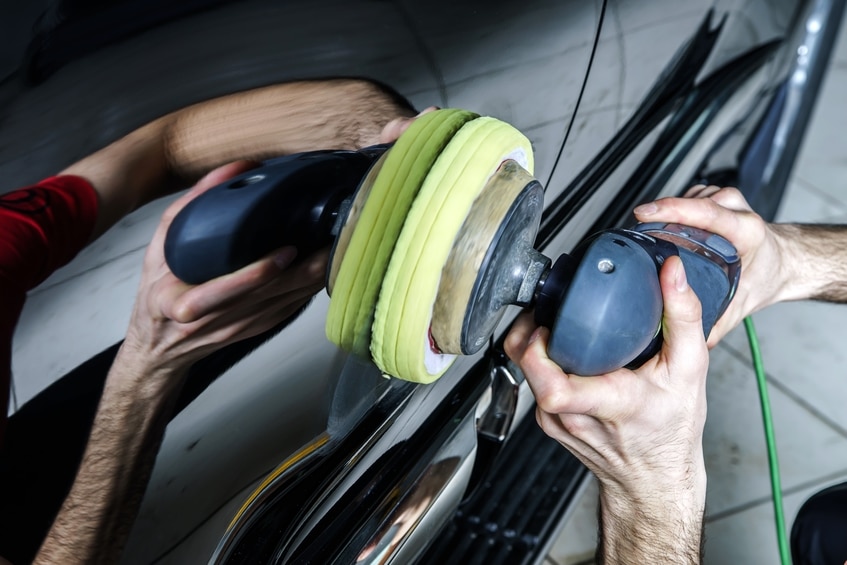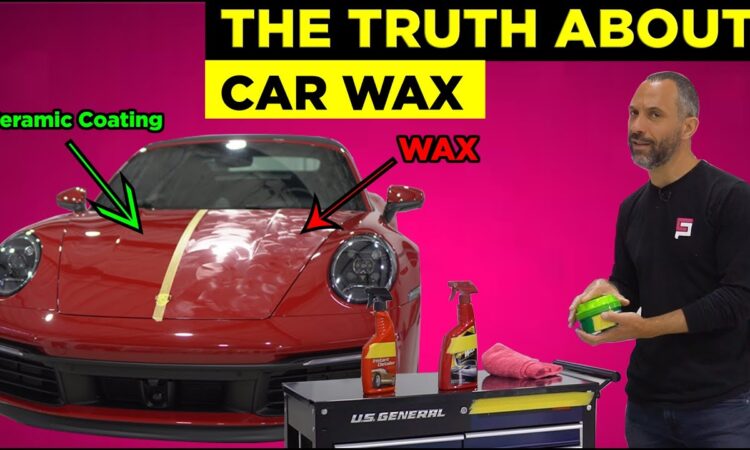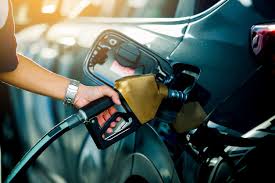Are you wondering how to make your car shine? As spring approaches, car waxing might as well be an option; it presents an opportune moment to rejuvenate your car’s exterior. During the winter, even in milder conditions, the accumulation of dirt and micro-damages on the coating becomes inevitable. Traditional car washes may prove ineffective in removing these issues, making car polishing potentially necessary for a thorough clean. Wondering how to go about it correctly?
Whether you opt for a DIY approach or enlist the expertise of specialists, polishing your car becomes a consideration. The associated cost of professional services varies based on the extent of the job and the size of the vehicle. The level of technological advancement in the polishing process also influences the overall expense. Occasionally, taking matters into your own hands and attempting to polish your car can be a cost-effective alternative. However, it’s crucial to keep in mind a few essential rules during this DIY endeavor.
Why Polish Your Car?
Car polishing goes beyond the routine car wash, offering numerous benefits that contribute to the overall maintenance and aesthetics of your vehicle. Understanding the reasons behind car polishing can help you appreciate the importance of this detailing process.
- Maintaining Aesthetics:
Regular car polishing is essential for maintaining the visual appeal of your vehicle. It goes beyond just cleanliness, restoring the shine and luster of the paint that may have been dulled by environmental factors or contaminants. - Protecting the Paint:
Car polishing serves as a protective measure for your vehicle’s paint. It creates a barrier that shields the paint from harmful elements such as UV rays, bird droppings, tree sap, and other pollutants that can cause damage over time. - Preventing Oxidation:
Oxidation is a common issue for exposed vehicle surfaces. Polishing helps prevent oxidation, ensuring that the paint remains vibrant and free from the dull, chalky appearance associated with aging. - Enhancing Resale Value:
Regular polishing can significantly enhance the resale value of your car. A well-maintained, polished exterior signals to potential buyers that the vehicle has been cared for, making it more appealing in the used car market. - Improved Fuel Efficiency:
While it might seem surprising, a polished car can contribute to improved fuel efficiency. A smooth, well-maintained exterior reduces aerodynamic drag, helping the vehicle move more efficiently through the air. - Preserving the overall condition:
Beyond the aesthetics, car polishing contributes to preserving the overall condition of the vehicle. It prevents the accumulation of dirt, grime, and contaminants that can lead to corrosion and other long-term damage.
Understanding these benefits underscores the significance of incorporating car polishing into your regular vehicle maintenance routine. Whether you choose to do it yourself or opt for professional services, the long-term advantages make it a worthwhile investment in the longevity and appearance of your car.
Choosing the Right Products and Accessories
Selecting the appropriate products and accessories is crucial for a successful car polishing experience. Whether opting for machine or manual polishing, careful consideration of materials is essential to prevent damage to the vehicle’s paint and achieve optimal results.
- Overview of Machine vs. Manual Polishing:
- Understand the pros and cons of using a machine versus manual polishing.
- Highlight the risk of potential paint damage associated with machine use, especially for first-time users.
- Selection of Polishing Cloths or Sponges:
- Emphasize the importance of choosing the right polishing cloth or sponge for the task.
- Recommend starting with a softer material for beginners to avoid permanent damage to the paint coating.
- Matching Polishing Paste to Car Paint Type:
- Stress the significance of selecting the correct polishing paste based on the car’s paint type.
- Differentiate between matte and metallic finishes, noting the distinct parameters required for each.
- Additional products for headlights and windows:
- Advise on the necessity of separate products for polishing headlights and windows.
- Emphasize the importance of using specialized items for specific elements to ensure the best possible outcome.
By carefully considering these factors, car owners can make informed decisions regarding the choice of products and accessories, ultimately leading to a more effective and safer car polishing process.
Step-by-Step Guide to Car Polishing
Car polishing is a meticulous process that involves several steps to ensure a thorough and effective result. Following a systematic approach will help rejuvenate your vehicle’s appearance and protect its paint.
A. Preparing the Car for Polishing
- Thorough Car Wash:
- Begin by giving your car a comprehensive wash to remove accumulated dirt and micro-damages.
- Use a microfiber cloth to prevent scratching during the washing process.
- Drying with Microfiber Cloths:
- After washing, delicately dry the car using soft microfiber cloths.
- Removing moisture is crucial before proceeding to the polishing stage.
B. Application of Polishing Paste
- Proper quantity and even distribution:
- Apply an appropriate amount of car polishing paste to a small section of the vehicle’s surface.
- Ensure an even distribution to avoid excessive product buildup, which may lead to uneven results.
- Tips for Manual and Machine Polishing:
- If you’re new to polishing, consider starting with manual techniques using a polishing cloth or sponge.
- For those using a machine, be cautious, as excessive pressure or incorrect technique may damage the paint.
C. Waxing for Protection and a Glossy Finish
- Significance of Effective Car Washing Products:
- Choose high-quality wax that complements the polishing process.
- Effective car washing products are crucial to protect the paint from further degradation.
- Application Process for Optimal Results:
- Apply the wax similarly to the polishing paste, ensuring a consistent and thin layer.
- This step not only protects the paint but also enhances its color and provides a glossy finish.
This step-by-step guide emphasizes the importance of patience and precision in achieving a polished and dazzling car exterior. The combination of thorough washing, meticulous application of polishing paste, and the protective layer of wax contributes to a long-lasting shine. Remember, occasional polishing, not too frequently, ensures optimal maintenance without excessive abrasion of the paint.
Polishing Specific Car Elements
When it comes to achieving an overall polished look for your vehicle, it’s essential to pay attention to specific car elements, such as windows and headlights. Properly polishing these components not only enhances the aesthetics of your car but also contributes to safety on the road.
A. Polishing Car Lamps and Windows
To start, it’s crucial to understand that polishing serves the dual purpose of removing scratches and revitalizing the appearance of individual car elements. Nowadays, there are specialized products available for polishing windows and headlights, making the process more efficient.
1. Importance of Removing Scratches
- Scratches on windows and headlights not only diminish the visual appeal but can also impact visibility. Polishing helps eliminate these scratches, ensuring optimal clarity.
2. Products Available for Windows and Headlights
- Different products cater to specific needs. Ensure you select the right polish for each element; for instance, there are formulations designed for headlights that may differ from those suitable for window polishing.
B. Steps for Polishing Headlights
While the process of polishing headlights might seem intricate, following a systematic approach can simplify the task and significantly enhance both the visual appeal and safety aspects of your vehicle.

1. Removal and Disassembly
- Carefully remove the entire headlights, allowing for better access to the lampshade and lens. Disassemble the lamp to ensure you can reach all sides for thorough polishing.
2. Cleaning and Degreasing
- Before applying the polishing paste, it’s essential to clean and degrease the lamp’s surface. This ensures the polish adheres effectively and produces the desired results.
3. Application of Polishing Paste
- Rub the polishing paste onto each element of the lamp with strong, circular movements. Repeat this process until you achieve a satisfactory level of shine and clarity.
4. Reinstallation for Enhanced Safety
- After completing the polishing, clean the headlights thoroughly and reinstall them securely. Well-maintained headlights contribute to up to 50% more light output, significantly improving visibility and safety during nighttime driving.
By incorporating these steps into your car polishing routine, you not only enhance the visual appeal of specific elements but also contribute to the overall safety and performance of your vehicle. Taking the time to polish your car’s lamps and windows is a worthwhile investment in maintaining both aesthetics and functionality.
Tips for Achieving the Best Results
When aiming for a flawless polished finish on your car, following some key tips can make the process more efficient and yield better results.
- Time and Patience are Key: One of the fundamental aspects of successful car polishing is dedicating ample time to the process. Rushing through the steps may compromise the quality of the finish. Careful and slow operation of the polisher is essential for a smooth and even outcome.
- Light Source for Scratch Check: To ensure that all scratches have been effectively removed during the polishing process, consider using an additional light source. An ordinary halogen lamp works well for this purpose. It helps in identifying any remaining imperfections and ensures a thorough polishing job.
- Temperature Control with Electric Polishers: For those using an electric polisher, keeping an eye on the body temperature is crucial. If you notice that the paint feels excessively hot to the touch, it indicates overheating. In such cases, promptly move to another part of the car to prevent any potential damage to the paintwork.
- Occasional Polishing: While a polished car exudes a stunning appearance, it’s important not to overdo it. Excessive polishing may lead to unnecessary abrasion of the paint. Aim for occasional polishing sessions to maintain the shine without compromising the integrity of the paint coating.
These tips collectively contribute to a successful car polishing experience, ensuring that the effort put into the process results in a vehicle that not only looks stunning but is also well-maintained for the long term.
Conclusion
In conclusion, achieving a polished and gleaming exterior for your vehicle is not only about aesthetics but also crucial for preserving the integrity of the paint and ensuring a longer lifespan. The thorough process of car polishing, especially after the wear and tear of winter, revitalizes your vehicle’s appearance and safeguards it from potential damages.
Recapping the Car Polishing Process:
- The importance of starting with a comprehensive car wash cannot be overstated. Removing sand and microstones before polishing prevents potential scratches that could compromise the varnish.
- Choosing the right products and accessories, such as the appropriate polishing paste and cloths or sponges, plays a pivotal role in the success of the polishing endeavor.
- Whether opting for manual or machine polishing, the application of the polishing paste demands attention to detail, with a focus on even distribution to achieve optimal results.
- The final touch involves waxing the car, providing both protection against further degradation and a lustrous finish that enhances the paint’s color.
Polishing Specific Car Elements:
- The guide extends beyond overall body polishing to address specific elements like car lamps and windows. Polishing these components not only removes scratches but also contributes to enhanced safety, especially in the case of headlights.
Tips for Achieving the Best Results:
- Acknowledging the time commitment required for effective polishing is essential. While it may be a time-consuming task, the results are well worth the effort.
- Selecting an appropriate workspace, preferably covered and free from sunlight and precipitation, ensures an optimal environment for the polishing process.
- For those using electric polishers, cautionary measures are crucial. Monitoring the body temperature of the polisher and maintaining a controlled pace are vital to prevent overheating and potential damage.
Final Thoughts:
In essence, car polishing is a periodic ritual rather than a frequent one. Excessive polishing may lead to unnecessary abrasion of the paint. Therefore, occasional, meticulous care will not only restore your car’s original shine but also contribute to its long-term health. Embrace the process, follow the guidelines, and revel in the beauty of your rejuvenated, stunning vehicle.


